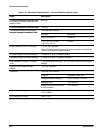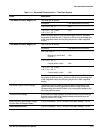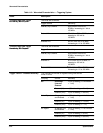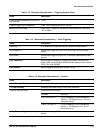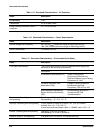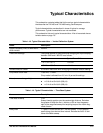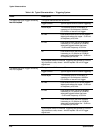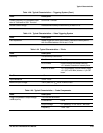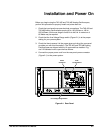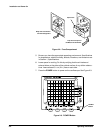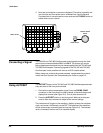
Typical Characteristics
Specifications
1Ć18
TableĂ1Ć20:ăTypical Characteristics Ċ Triggering System
Name
Description
TAS 465 EdgeĆType Trigger Sensitivity,
Not DC Coupled
The typical sensitivities are as follows:
N
o
tDCC
oup
l
e
d
Trigger Source Typical Signal Level for Stable Triggering
Noise Reject 1.2 divisions from DC to 25ĂMHz, inĆ
creasing to 2.2 divisions at 150 MHz.
0.5 division or less will not trigger.
HF REJ 0.30 division from DC to 10 kHz; attenuĆ
ates signals above the upper -3 dB cutĆ
off frequency of 50 kHz.
LF REJ 0.30 division from 100 kHz to 25 MHz,
increasing to 1.0 division at 150 MHz;
attenuates signals below the lower
-3 dB cutoff frequency of 50 kHz.
AC 0.30 division from 350 Hz to 25 MHz,
increasing to 1.0 division at 150 MHz;
attenuates signals below the -3 dB cutĆ
off frequency of 160 Hz.
Typical signal levels for External Triggering are derived by convertĆ
ing divisions to volts, where 1 division equals 100 mV of trigger
signal level.
TAS 455 EdgeĆType Trigger Sensitivity,
Not DC Coupled
The typical sensitivities are as follows:
Not DC Coupled
Trigger Source Typical Signal Level for Stable Triggering
Noise Reject 1.2 divisions from DC to 25ĂMHz, inĆ
creasing to 2.2 divisions at 100 MHz.
0.5 division or less will not trigger.
HF REJ 0.30 division from DC to 10 kHz; attenuĆ
ates signals above the upper -3 dB cutĆ
off frequency of 50 kHz.
LF REJ 0.30 division from 100 kHz to 25 MHz,
increasing to 1.0 division at 100 MHz;
attenuates signals below the lower
-3 dB cutoff frequency of 50 kHz.
AC 0.30 division from 350 Hz to 25 MHz,
increasing to 1.0 division at 100 MHz;
attenuates signals below the -3 dB cutĆ
off frequency of 160 Hz.
Typical signal levels for External Triggering are derived by convertĆ
ing divisions to volts, where 1 division equals 100 mV of trigger
signal level.



